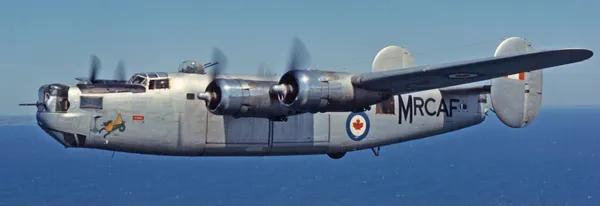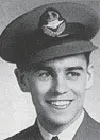Consolidated Liberator B-24 / F-7

Consolidated Liberator G.R. Mk. VIII, RCAF (Serial No. 11130) ex-USAAF Consolidated (Vultee) B-24L Liberator USAAF (44-50154)
ex-RAF (Serial No. 5009), ex-Indian Air Force (Serial No. HE773).
Currently preserved in the Canada Aviation and Space Museum Ottawa Ontario.
The Consolidated B-24 Liberator was an American heavy bomber flown by the RCAF during the Second Word War. It was designed with a shoulder-mounted, high aspect ratio Davis wing which gave the Liberator a high cruise speed, long range and the ability to carry a heavy bomb load. Early RAF Liberators were the first aircraft to cross the Atlantic Ocean as a matter of routine. In comparison with its contemporaries the B-24 was relatively difficult to fly and had poor low speed performance; it also had a lower ceiling compared with the Boeing B-17 Flying Fortress. Of the roughly 18,500 B-24s built in the USA during the war, 148 were flown by the RCAF on long range anti-submarine patrols, with the B-24 serving an instrumental role in closing the Mid-Atlantic gap in the Battle of the Atlantic. The RCAF also flew a few B-24s post war as transports.
Roughly half of all (RAF) Liberator crews in the China-Burma-India (CBI) Theatre were Canadian by the end of the war. John Muir of Vancouver flew the longest mission of the war: 24hrs, 10mins from Ceylon to Burma and back. (Kyle Hood) Harold Skaarup web page
last update: 2021-09-18 19:06:22
Liberator C. Mk. II AL516
Construction No. 14Took on charge Dorval 26-9-1941
Dorval to Gander 15-10-1941
Gander to Ayr 17-10-1941
To Scottish Aviation 17-10-1941
To 150 Squadron 28-11-1941
To 1653 CU 30-5-1942
To 1445 Flt 10-6-1942
To Scottish Aviation 1-8-1942 for Bomber Command mods, changed to Transport mods
To 1425 Flt 30-9-1942
To 511 Squadron 10-10-1942
Overshot landing at Gibraltar 31-10-1942
To BOAC as freighter, registered as G-AHZP




 Aviation Safety Network
Aviation Safety Network Commonwealth War Graves Commission
Commonwealth War Graves Commission Finadagrave.com
Finadagrave.com Llanelly, Carmarthenshire, Wales
Llanelly, Carmarthenshire, Wales





 Liberator bomber
Liberator bomber Wikipedia Liberator bomber
Wikipedia Liberator bomber